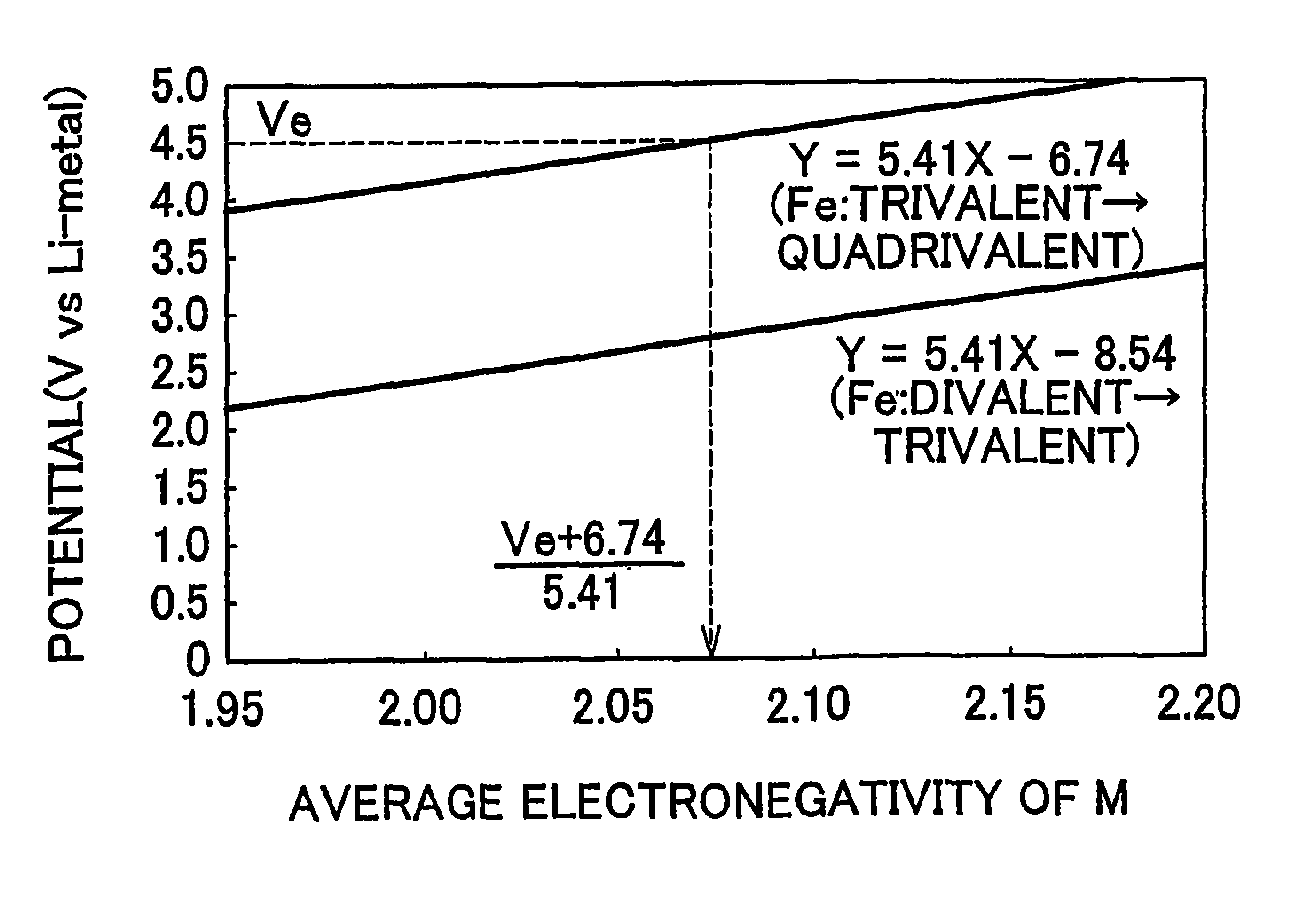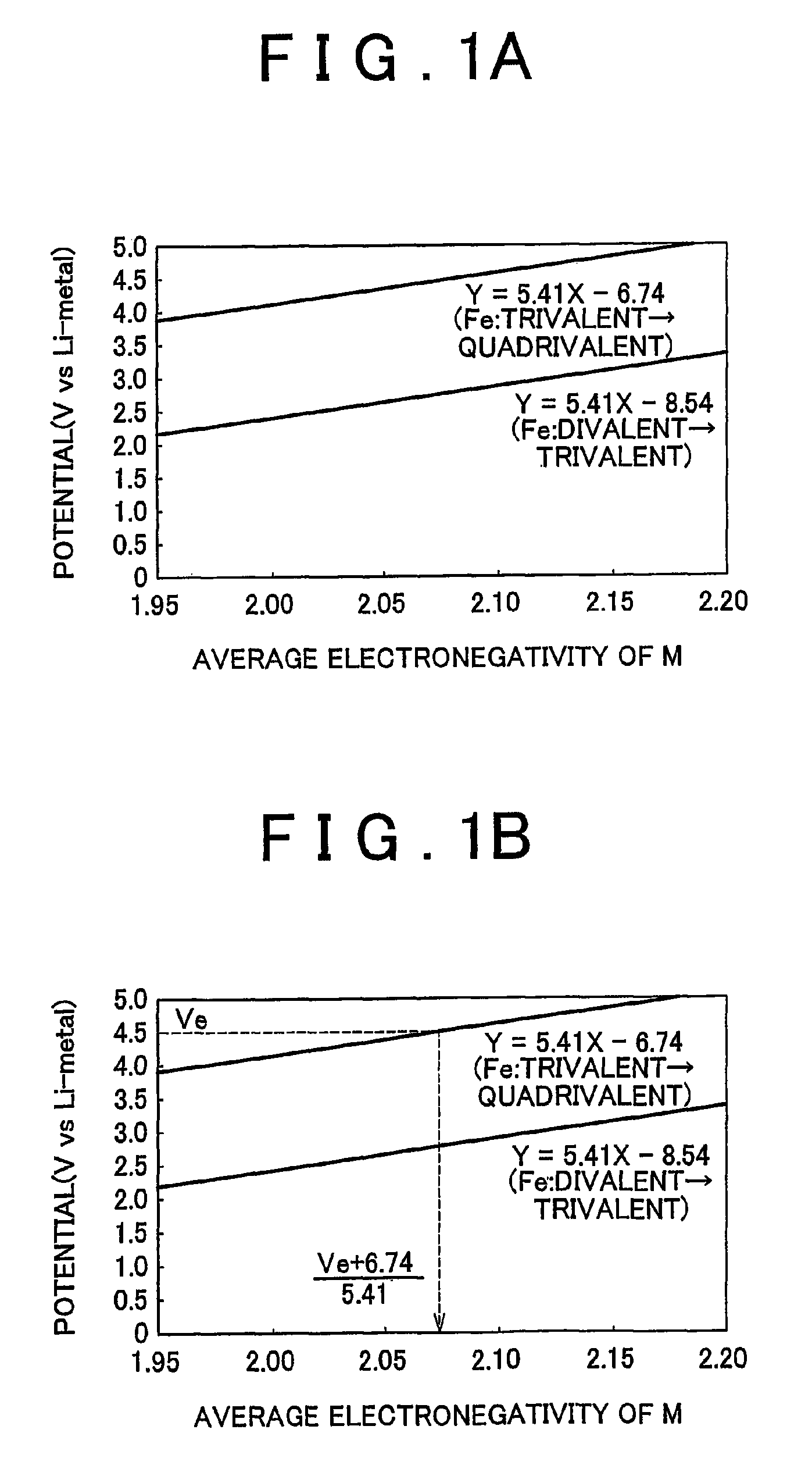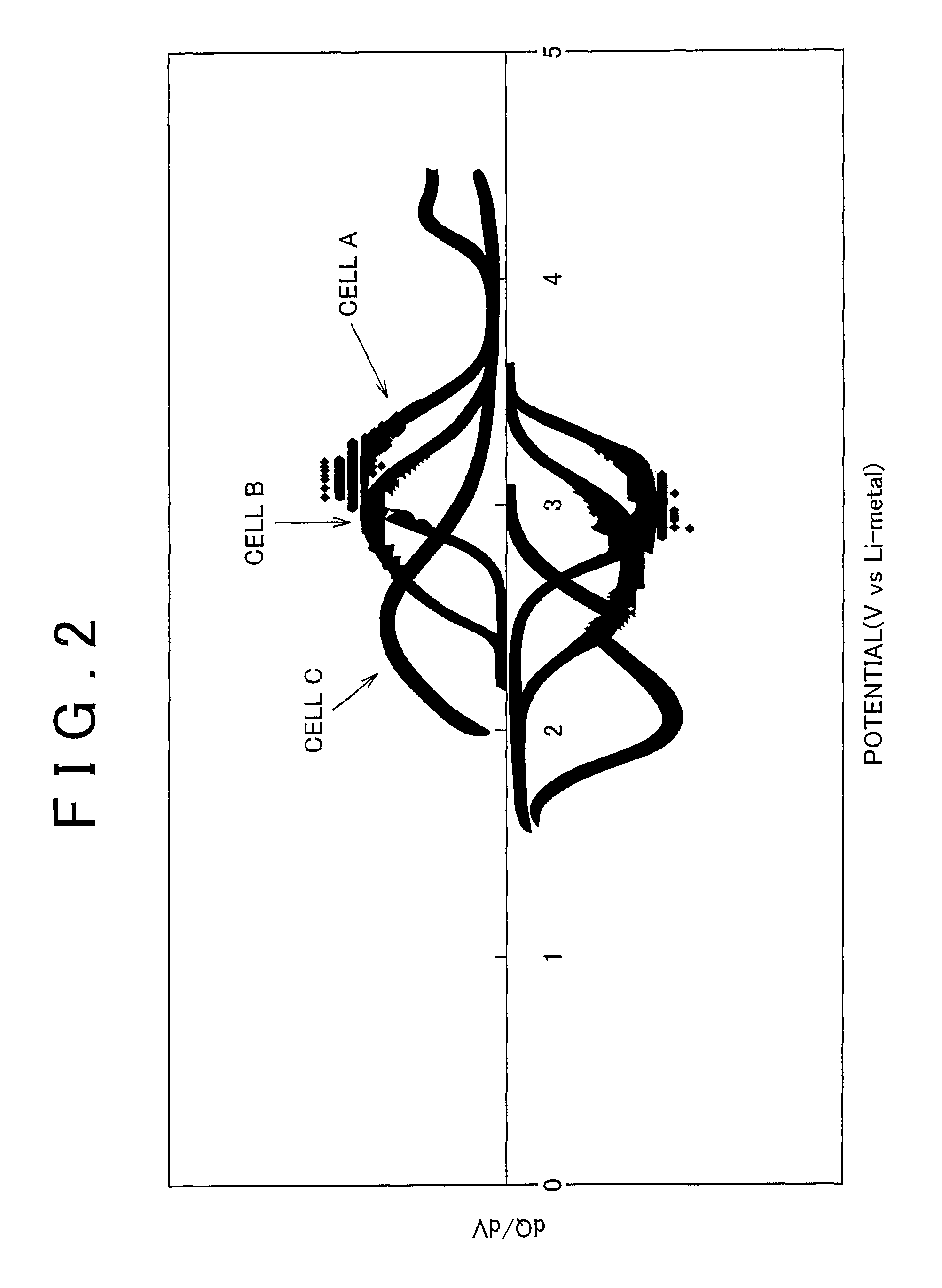Amorphous electrode active material and lithium secondary battery
a lithium secondary battery and active material technology, applied in secondary cell servicing/maintenance, cell components, electrochemical generators, etc., can solve the problem of low actual capacity and achieve the effect of superior charging and discharging characteristics
- Summary
- Abstract
- Description
- Claims
- Application Information
AI Technical Summary
Benefits of technology
Problems solved by technology
Method used
Image
Examples
Embodiment Construction
[0023]Hereinafter, electrode active material and a lithium secondary battery according to the invention will be described in detail.
[0024]First the electrode active material according to a first example embodiment of the invention will be described. The electrode active material according to this example embodiment of the invention is electrode active material which is used together with electrolyte solution having an electrolyte decomposition potential Ve. The electrode active material is amorphous and can be represented by the general expression LixFeMyOz, where x and y are values which independently satisfy 1<x≦2.5 and 0<y≦3, respectively, and z=(x+(valence of Fe)+(valence of M)×y) / 2 to satisfy stoichiometry. Also, M represents one or two or more types of glass former element, and the average electronegativity of M is less than (Ve+6.74) / 5.41.
[0025]According to the example embodiment of the invention, the oxidation potential from trivalent to quadrivalent Fe can be reduced so tha...
PUM
| Property | Measurement | Unit |
|---|---|---|
| crystallite size | aaaaa | aaaaa |
| crystallite size | aaaaa | aaaaa |
| crystallite size | aaaaa | aaaaa |
Abstract
Description
Claims
Application Information
 Login to View More
Login to View More - R&D
- Intellectual Property
- Life Sciences
- Materials
- Tech Scout
- Unparalleled Data Quality
- Higher Quality Content
- 60% Fewer Hallucinations
Browse by: Latest US Patents, China's latest patents, Technical Efficacy Thesaurus, Application Domain, Technology Topic, Popular Technical Reports.
© 2025 PatSnap. All rights reserved.Legal|Privacy policy|Modern Slavery Act Transparency Statement|Sitemap|About US| Contact US: help@patsnap.com



